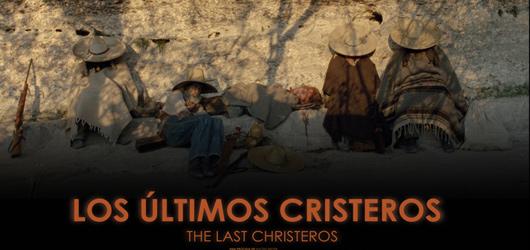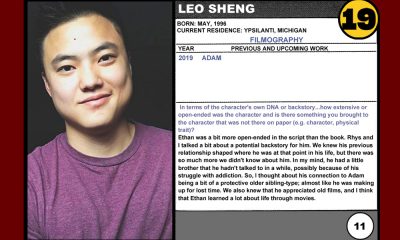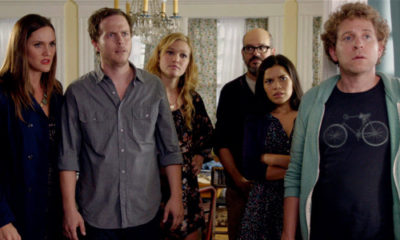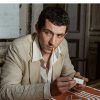Retro IONCINEMA.com
Rotterdam 2012: Interview with Filmmaker Matías Meyer (The Last Christeros)
A film that is contemplative and distilled, Matías Meyer’s third feature film creates an internal dialogue between history and the viewer providing breathtaking images that swell up the frame. Focusing on the war of the Cristeros in Mexico that occurred between the years of 1926-1929 where peasants fought against a government that had taken their land and deprived them of their religious freedom.
A film that is contemplative and distilled, Matías Meyer’s third feature film creates an internal dialogue between history and the viewer providing breathtaking images that swell up the frame. Focusing on the war of the Cristeros in Mexico that occurred between the years of 1926-1929 where peasants fought against a government that had taken their land and deprived them of their religious freedom. Aptly titled The Last Christeros, according to Meyer, it was almost inevitable to address this issue as his father, historian Jean Meyer is tied to this chapter in Mexico’s past. Based on the novel Rescoldo by Antonia Estrada, the film first premiered at the Toronto Int. Film Festival before finding a slot at this year’s International Film Festival Rotterdam.

Anny Gomes: This film was based in Antonio Estrada’s novel ‘Rescoldo, los últimos cristeros’. Where did the decision to adapt the novel come from and what were the difficulties in doing so?
Matías Meyer: So far it worked better to adapt the literature surrounding the Cristeros instead of writing the scripts from scratch. I like having the text as the basis and gradually transforming it into the material to be filmed. In this case, I turned to the novel by Antonio Estrada as the best novel regarding Cristeros which is closer to the essence of their popular movement. The fact that it is autobiographical has given particular force; Antonio Estrada is the son of Colonel Florencio Estrada, my protagonist. From that novel about ten movies could be made so I decided to delete everything and maintain the intimate and epic moment. Focusing on the view of the Colonel and I took it as the backbone of the film, between their inner doubt to disarm and escape with his family or his promise to God and die in battle.
I wanted to make a film about the essence of Cristiada, not Cristiada history. The novel takes place between 1932 and 1939. I preferred the script happens only during the last days of the last Cristeros, the end of the fight of the upheaval. I also chose to have it all happening in nature, to bring the characters to their inner world.
Gomes: The Christeros’ journey reminds us of journeys of other biblical figures. The long takes and character’s interaction were keen in getting a sense of what their mission was and who they were. How the casting did take place and how did you choose the locations?
Meyer: From the beginning it was very clear that I did not want professional actors, but peasants from that zone that resembled what I had seen in archival photographs and talked just like the peasants in the novel. Several of the actors who had ancestors chose as Cristeros, their commitment to the film was also a commitment to the memory of their grandparents. Same with the locations, we chose areas where there was conflict; the two caves where we filmed were Cristeros’ shelter. One of these caves had a very strange feeling. Each time I became more aware that my project had something supernatural around it: I was filming in front of the camera, the descendants of Cristeros in places where there had been the real cristeros …

Gomes: This film focuses more on these men and their faith instead of their religion. However, people can initially be interested about the film regarding its religious matters. How do you expect the audience to react to the film? What about Latin America (and Mexico specifically?)
Meyer: Each viewer will react differently, because the language of film allows different individual experiences, as it gives you great freedom compared to what you’re seeing. The film gives the viewer the time to ask questions, listen to your inner voice … is what Peter Watkins calls open communication; the message leaves the screen to the viewer and the viewer to the screen. On the other hand, the viewer will always be left wanting to know more about historical context, and if I can get them interested about a subject, it is a job well done.
Gomes: Existentialism is present in your other films: Wadley, El pasajero and The Cramp. Also, the cinematography of The Last Christeros differs from your other works. In this film, specifically, the shots remind us of old pictures full of melancholia and beautiful imagery. What was your real intention by relating these atmospheric and intimate scenes with what the Christeros stood for?
Meyer: In relation to the image, I was very inspired by the stock photographs, biblical pictures and Mexican landscapes. I used low angle shots to mystify my characters. The Cristeros in its purest intention, desire to be followers of Christ and I think that’s why I chose this type of contemplative atmosphere, to allude to the spiritual, and try to make visible the invisible: the faith of these men.
Gomes: What is your next project?
Meyer: I’m working in a universe that is completely opposite to what I’ve done so far. But I’d rather not talk about it yet because I am still working on it.



























